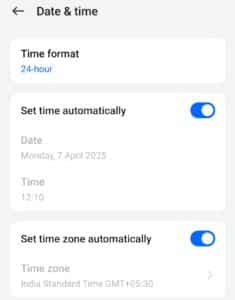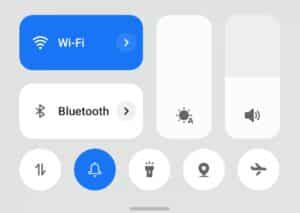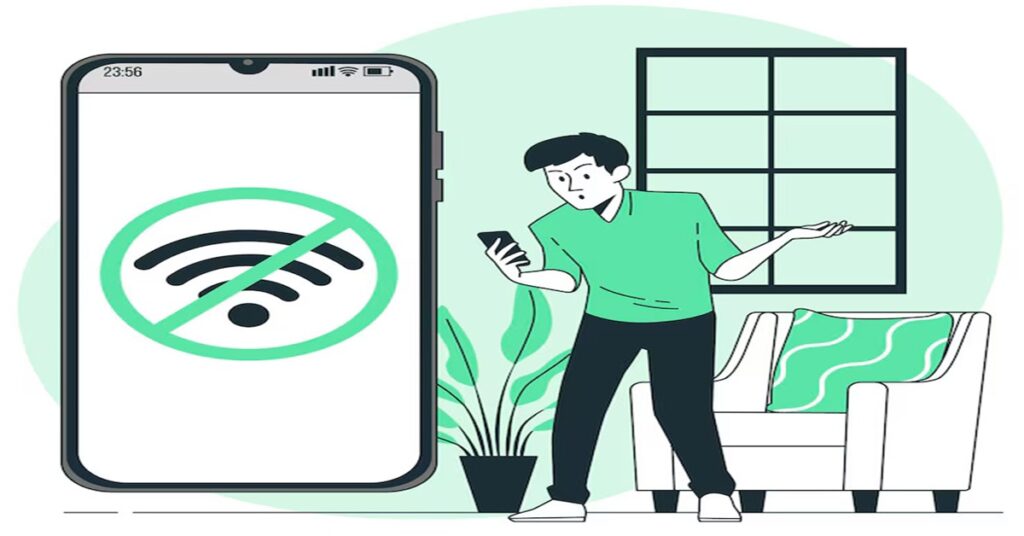In today’s digital world, internet access is a necessity. So when your Android phone shows WiFi connected but no internet, it can be incredibly frustrating. You might see the WiFi signal bar full, but when you try to open a website or app, nothing loads.
This issue is more common than you think, and the good news is — it’s fixable. Whether it’s a simple glitch, DNS problem, router misconfiguration, or something deeper in your Android settings, In this guide, we provide the practical solutions to fix WiFi connected no internet access on Android.
Table of contents
- Understanding the Problem: Why Does WiFi Say Connected But No Internet?
- Quick Fixes to Try First
- Check Your Internet Connection
- Restart Your Devices
- Forget and Reconnect to the WiFi Network
- Check for a Captive Portal
- Check Your Date and Time Settings
- Toggle WiFi on and off
- Reset Network Settings
- Switch Between DHCP and Static IP
- Update Your Android System Software
- Clear Cache and Google Services
- Check Router Configuration
- Use Google DNS or OpenDNS
- Check MAC Address Filtering
- VPN or Proxy May Be Causing Issues
- Safe Mode Troubleshooting
- Advanced: Use ADB to Fix DNS or Reset Network
- Contact Your Internet Service Provider
- Frequently Asked Questions (FAQs)
Understanding the Problem: Why Does WiFi Say Connected But No Internet?
This issue means your device is connected to a router but isn’t receiving data from the internet. It can be due to:
DNS errors
IP address conflicts
Router malfunction
Firmware bugs
App interference
Incorrect network settings
ISP issues
Understanding the cause helps choose the right fix, so let’s start with the basic checks.
Quick Fixes to Try First
Before diving deep, here are a few quick things you can do:
Turn on/off Airplane mode
Toggle WiFi off and on
Restart your Android phone
Reboot your router/modem
Try connecting another device to the same WiFi
Use mobile data to check if the internet works
If none of these fix it, let’s move on.
How to Factory Reset an Android Phone
Check Your Internet Connection
This may sound obvious, but make sure your router actually has internet access. Try these:
Connect a laptop or another phone to the same WiFi.
If it also says “No Internet,” the problem is with your router or ISP.
Try restarting the router.
Contact your ISP if the issue persists.
If the internet works on other devices, the issue is isolated to your Android.
Restart Your Devices
Power cycling often fixes weird network glitches:
Restart your Android phone by holding the power button.
Unplug your router/modem, wait for 30 seconds, plug it back in.
Once both devices reboot, connect again and see if the issue is resolved.
Find My Phone: Best Ways to Track & Recover a Lost or Stolen Device
Forget and Reconnect to the WiFi Network
This resets the connection between your phone and the router:
Go to Settings > Network & Internet > WiFi.
Tap the network name, then Forget.
Reconnect by entering the password.
This can help remove saved incorrect IP settings or DNS entries.
Check for a Captive Portal
Sometimes, public WiFi requires you to log in via a web page. If that page doesn’t pop up:
Open a browser and visit example.com or neverssl.com.
The login page should appear.
Sign in or accept the terms to access the internet.
Check Your Date and Time Settings
Incorrect time can cause security certificate errors and block access.
Go to Settings >Additional Settings > Date & Time
Enable Automatic date & time and Automatic time zone
Then restart your device and reconnect to WiFi.

Toggle WiFi on and off
It seems basic, but:
Go to Quick Settings
Turn WiFi Off, wait 10 seconds
Turn it On again
This forces your Android to request a fresh IP from the router.

Reset Network Settings
This restores all network-related settings to default.
Open Settings > System > Reset Options
Tap Reset WiFi, mobile & Bluetooth
Confirm the action
⚠️ Note: This will erase saved WiFi passwords.
How to Stop Pop-up Ads on Android Phone
Switch Between DHCP and Static IP
Dynamic IP (DHCP) sometimes fails to assign a valid IP.
To set a static IP:
Go to Settings > WiFi
Tap the network name > Advanced
Change IP Settings from DHCP to Static
Use:
IP: 192.168.1.XX (choose a unique number)
Gateway: 192.168.1.1
DNS 1: 8.8.8.8
DNS 2: 8.8.4.4
Save and reconnect.
Update Your Android System Software
Software bugs can cause connectivity issues.
Go to Settings > System > Software Update
Tap Check for updates
Install if available. Updates often contain important WiFi and connectivity fixes.
Clear Cache and Google Services
Sometimes, corrupted cache files or Play Services can interfere:
Go to Settings > Apps > Google Play Services
Tap Storage > Clear Cache
Do the same for Google Services Framework and Carrier Services
Then restart your phone and try again.
Why Your Android phone Is Not Charging and How to Fix It
Check Router Configuration
If you have access to the router admin panel:
Ensure MAC Filtering is disabled or your phone is allowed
Check DHCP is enabled
Update the firmware
Set DNS to Google’s (8.8.8.8 / 8.8.4.4)
Reboot the router after making changes.
Use Google DNS or OpenDNS
Custom DNS can solve many “no internet” issues.
Go to WiFi Settings > Advanced > IP Settings
Set DNS manually:
Google DNS:
8.8.8.8,
8.8.4.4
OpenDNS:
208.67.222.222,
208.67.220.220
Apply and reconnect.
Check MAC Address Filtering
MAC Filtering can block your device.
Log in to your router
Find MAC Filtering or Access Control
Make sure your phone’s MAC is not blocked
Or add it to the allow-list
To find your phone’s MAC:
Settings > About Phone > Status > WiFi MAC Address
VPN or Proxy May Be Causing Issues
Some VPN or Proxy apps interfere with connectivity:
Disable any active VPN apps
Go to Settings > Network > WiFi > Advanced
Make sure Proxy is set to None
Then check your connection again.
Safe Mode Troubleshooting
Some third-party apps could mess with your WiFi:
Hold Power button > Tap and hold Power Off
Tap OK when asked to boot in Safe Mode
Connect to WiFi
If it works, a recently installed app is the culprit. Uninstall apps one by one until you find it.
Advanced: Use ADB to Fix DNS or Reset Network
If you’re a developer or know how to use ADB (Android Debug Bridge):
Use commands to reset DNS, flush cache, or reset WiFi configurations
Example:
adb shell settings put global captive_portal_mode 1
⚠️ Only attempt this if you’re familiar with ADB tools.
Contact Your Internet Service Provider
If you’ve tried everything and still can’t connect:
Call your ISP and ask if there’s a service outage
Request them to check if your router is properly configured
Ask for a modem replacement if it’s old
Frequently Asked Questions (FAQs)
Why does my phone say “Connected but no Internet”?
It means your phone is connected to the WiFi network but can’t access the web — usually due to router, DNS, or software issues.
Will resetting network settings delete anything?
It will remove saved WiFi networks, paired Bluetooth devices, and mobile data settings — but no personal data is lost.
Does airplane mode help fix this issue?
Yes, it resets your phone’s network modules, which can resolve temporary glitches.
Is this issue more common on certain Android phones?
Some users report it more often on Xiaomi, OnePlus, or Samsung devices due to aggressive battery and WiFi management.
I hope this guide helps you to fix wifi connected but no internet on Android device. Let’s know in the comment section.

4 Comments
Pingback: How to Enable Developer Options on Android (Step-by-Step Guide)
Pingback: Fix Android Bluetooth Issues: Troubleshooting & Solutions
Pingback: Why Your Android phone Is Not Charging and How to Fix It
Pingback: How to Run Windows on Android